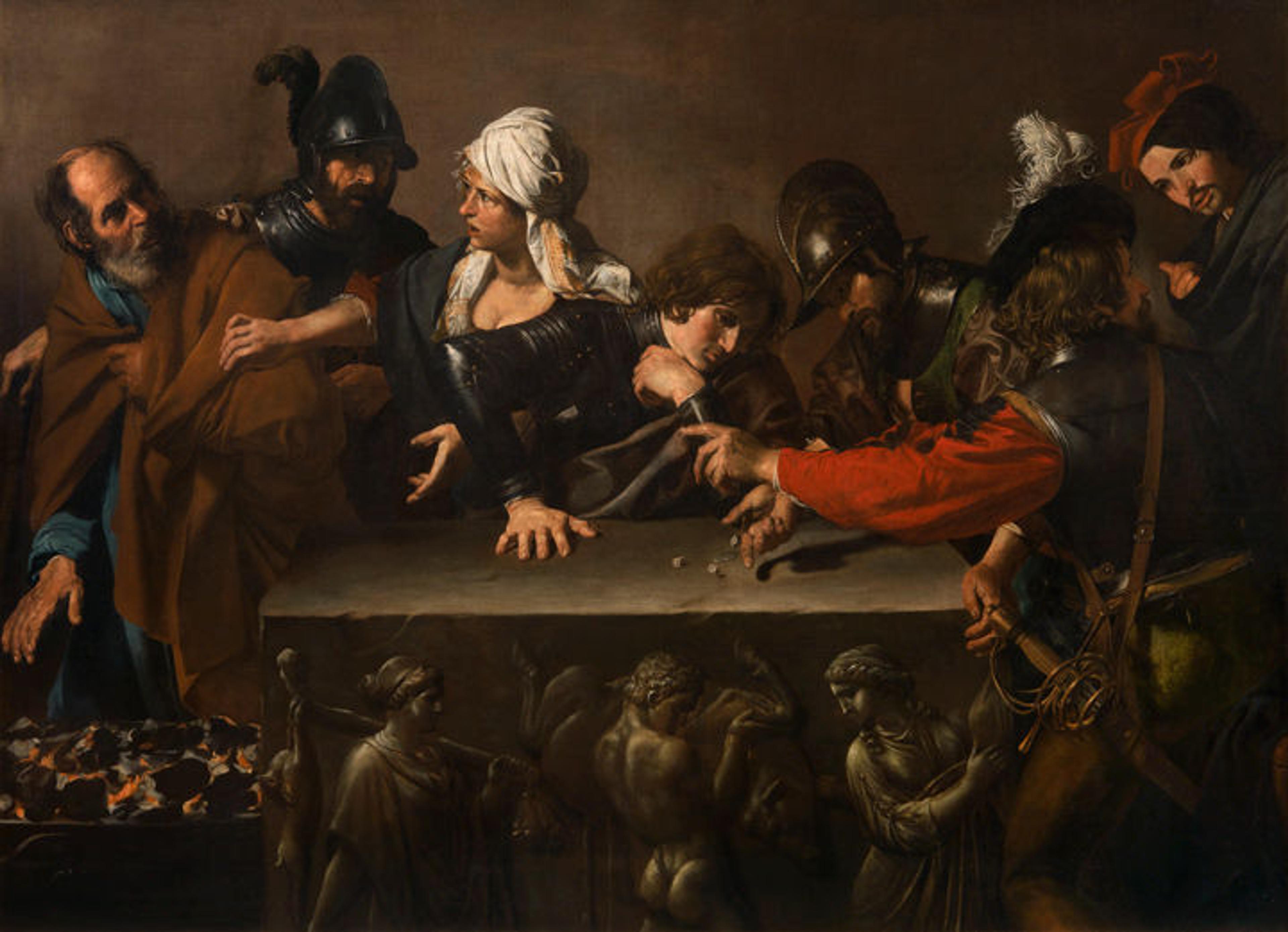
Valentin de Boulogne (French, 1591–1632). Denial of Saint Peter, ca. 1615–17. Oil on canvas; 67 1/2 x 94 7/8 in. Fondazione di Studi di Storia dell'Arte Roberto Longhi, Florence
«How does an artist suggest time in a painting? Or, more specifically: How should an artist suggest that what is shown in a painting is part of a continuum—a moment, something not frozen but transitory? It's something Caravaggio's critics found lacking in his work, which is to say that the figures looked frozen, "posed." Valentin de Boulogne took up this challenge and succeeded like no one else, taking Caravaggesque painting to a new level.»
Have a look at Valentin's painting Denial of Saint Peter. To one side, a group of soldiers play dice, which are shown suspended in mid-air, a fugitive shadow dancing across the table top. On the other side, Saint Peter, trying to be inconspicuous by warming his hands over a brazier, is identified as a follower of Jesus by a servant girl.

Detail view of Denial of Saint Peter showing three dice being rolled
The dynamic shifts. A soldier nabs him. The attention of the two gamblers is diverted. The next scene will not be pretty! It's almost Hitchcockian, the way in which Valentin unravels the narrative before our eyes. What a genius!
Related Links
Valentin de Boulogne: Beyond Caravaggio, on view at The Met Fifth Avenue from October 7, 2016, through January 16, 2017